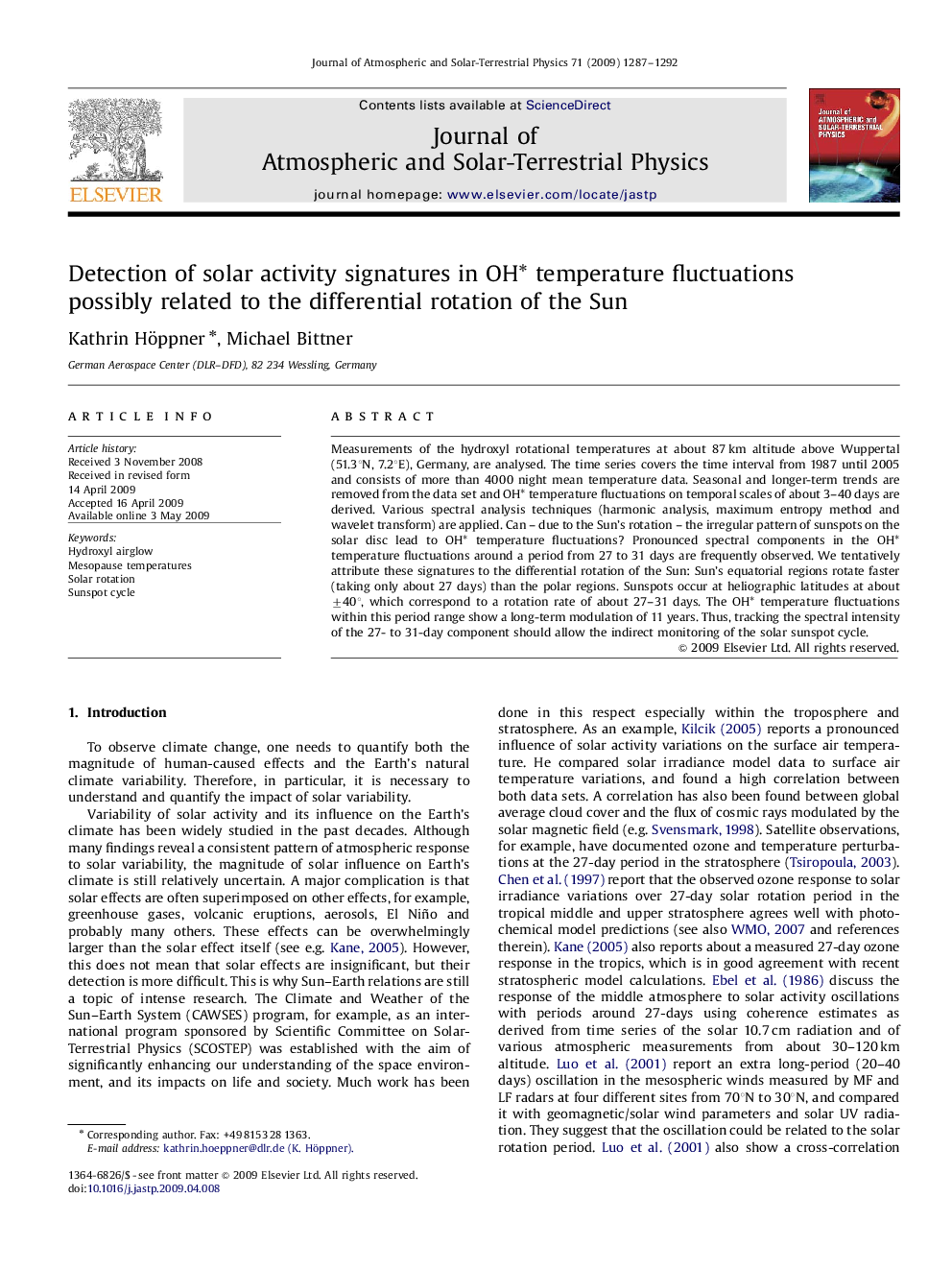| کد مقاله | کد نشریه | سال انتشار | مقاله انگلیسی | نسخه تمام متن |
|---|---|---|---|---|
| 1777619 | 1021751 | 2009 | 6 صفحه PDF | دانلود رایگان |

Measurements of the hydroxyl rotational temperatures at about 87 km altitude above Wuppertal (51.3°N, 7.2°E), Germany, are analysed. The time series covers the time interval from 1987 until 2005 and consists of more than 4000 night mean temperature data. Seasonal and longer-term trends are removed from the data set and OH* temperature fluctuations on temporal scales of about 3–40 days are derived. Various spectral analysis techniques (harmonic analysis, maximum entropy method and wavelet transform) are applied. Can – due to the Sun's rotation – the irregular pattern of sunspots on the solar disc lead to OH* temperature fluctuations? Pronounced spectral components in the OH* temperature fluctuations around a period from 27 to 31 days are frequently observed. We tentatively attribute these signatures to the differential rotation of the Sun: Sun's equatorial regions rotate faster (taking only about 27 days) than the polar regions. Sunspots occur at heliographic latitudes at about ±40°, which correspond to a rotation rate of about 27–31 days. The OH* temperature fluctuations within this period range show a long-term modulation of 11 years. Thus, tracking the spectral intensity of the 27- to 31-day component should allow the indirect monitoring of the solar sunspot cycle.
Journal: Journal of Atmospheric and Solar-Terrestrial Physics - Volume 71, Issue 12, August 2009, Pages 1287–1292